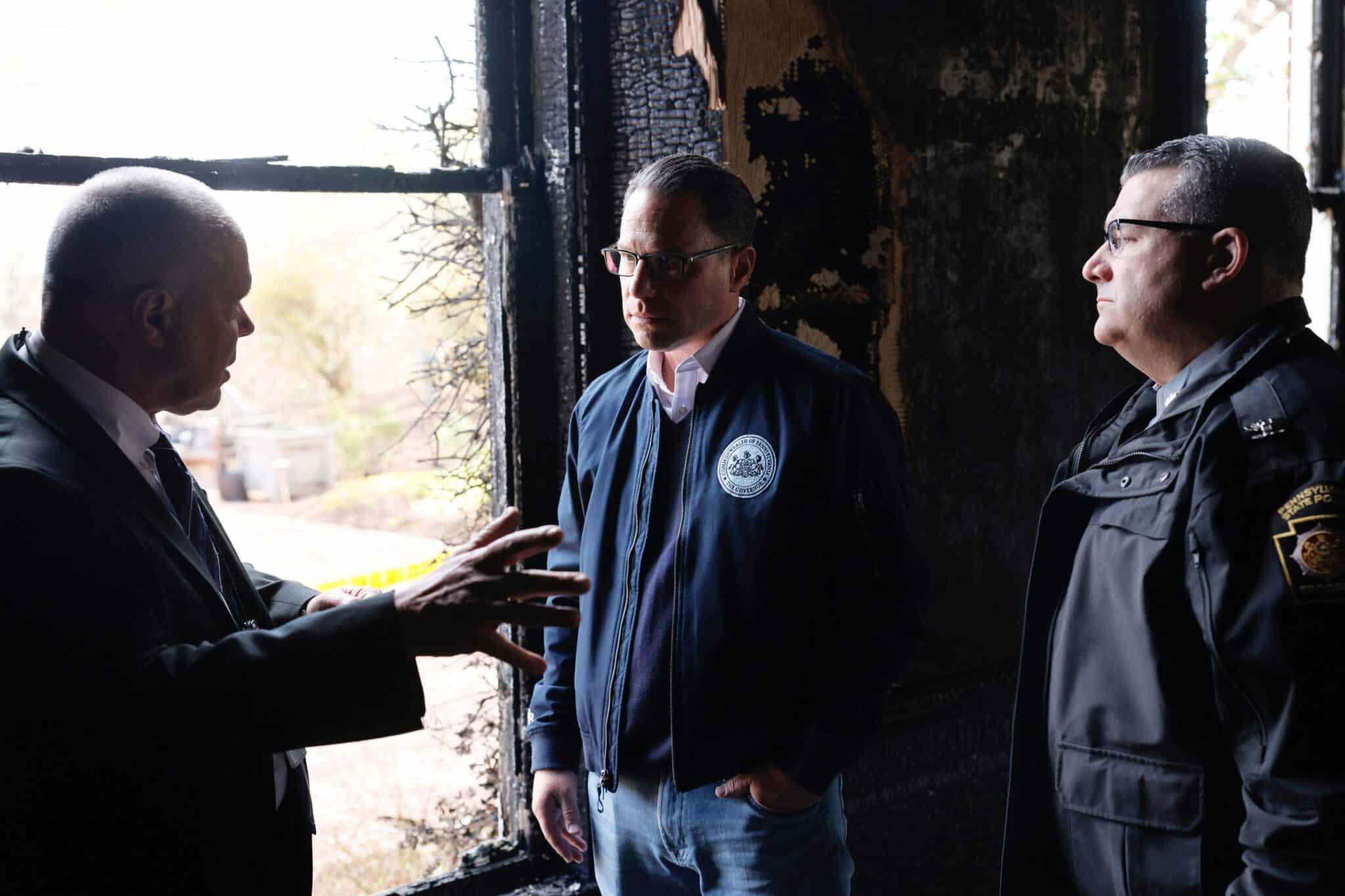(OSV News) — Human trafficking victims often hide in plain sight, but informed bystanders can help rescue them, say victim advocates.
January is National Human Trafficking Prevention Month, and in 2021 alone, some 50 million individuals worldwide were in a form of modern slavery, according to the United Nations’ International Labour Organization.
The two most common types of human trafficking are forced labor (including sex trafficking) and forced marriage.
In 2021, the Washington-based nonprofit Polaris, which operates the U.S. National Human Trafficking Hotline, received more than 10,350 reports involving over 16,550 individual victims — numbers representing “likely only a fraction of the actual problem,” according to the organization’s website.
During fiscal year 2022, the U.S. Department of Homeland Security opened 1,373 human trafficking investigations, an increase of more than 260 cases over the previous fiscal year.
The State Department’s 2023 Trafficking in Persons Report highlighted three key trends in trafficking — an increase in forced labor, a rise in the use of online scams to target victims and growing numbers of boys and men among those trafficked.
Yet individuals can take at least five concrete steps to free victims:
— 1. Know where trafficking happens.
“Awareness is the first thing,” said Sister Ann Victory, a member of the Sisters of the Humility of Mary and board member of the nonprofit U.S. Catholic Sisters Against Human Trafficking. “If your hackles go up, pay attention.”
Sex trafficking usually receives greater attention, but, Sister Ann said, consumers are often oblivious to the forced labor behind many goods and services.
“People often don’t know someone is being exploited so they could have a $6 T-shirt,” said Sister Ann.
Hotels, salons and restaurants are also trafficking hotspots, said survivor and advocate Theresa Flores.
— 2. Know who is at risk.
Traffickers prey on persons made vulnerable by poverty, homelessness, addiction, abuse and natural disasters, according to Human Trafficking Search, a global research database.
However, even everyday families can be vulnerable.
“Right now, a lot of grooming happens online,” said Sister Ann. “Traffickers exploit the internet, where kids are spending a lot of their time.”
Migrants and refugees are also at risk for trafficking, she said.
— 3. Know the signs.
Victims often “seem unable to speak,” Sister Ann said, with traffickers “doing all the talking.”
In addition, victims “don’t have their own money or identification,” nor do they know their exact address, she said.
A trained nurse, Sister Ann also looks for evidence of physical or psychological abuse in victims.
— 4. Ask and listen.
A few simple questions can engage victims and open the door to freedom.
“When you get your nails done, ask to go to the bathroom, and see if it looks like somebody is living there, with shampoo or a little room with a bed nearby,” said Flores. “If you’re in a restaurant and see the same (staff) person, but they’re not interacting with you, ask where they’re from, and when was the last time they talked to their family.”
Flores said she’s even “asked maids in a hotel how much they get paid per hour” to detect if they’re being trafficked.
Be attentive to activity in nearby hotel rooms, including sounds of violence and excessive guest traffic, said attorney Kristina Aiad-Toss of the Columbus, Ohio-based firm Babin Law, which has filed civil suits against hotels for failure to counter known trafficking on their premises.
— 5. Take action.
Bystanders who detect trafficking should not intervene directly, advocates said.
Instead, contact law enforcement and trained advocates, such as those staffing the National Human Trafficking Hotline, which can be reached by phone at 888-373-7888, by text at 233733 (“Befree”) or by live chat (https://humantraffickinghotline.org/en/chat).
Preventing trafficking and supporting victims is a way of living out the Gospel, said Sister Ann.
By Gina Christian | OSV News







News & Commentary
Five steps you can take to fight human trafficking and free victims
(OSV News) — Human trafficking victims often hide in plain sight, but informed bystanders can help rescue them, say victim advocates.
January is National Human Trafficking Prevention Month, and in 2021 alone, some 50 million individuals worldwide were in a form of modern slavery, according to the United Nations’ International Labour Organization.
The two most common types of human trafficking are forced labor (including sex trafficking) and forced marriage.
In 2021, the Washington-based nonprofit Polaris, which operates the U.S. National Human Trafficking Hotline, received more than 10,350 reports involving over 16,550 individual victims — numbers representing “likely only a fraction of the actual problem,” according to the organization’s website.
During fiscal year 2022, the U.S. Department of Homeland Security opened 1,373 human trafficking investigations, an increase of more than 260 cases over the previous fiscal year.
The State Department’s 2023 Trafficking in Persons Report highlighted three key trends in trafficking — an increase in forced labor, a rise in the use of online scams to target victims and growing numbers of boys and men among those trafficked.
Yet individuals can take at least five concrete steps to free victims:
— 1. Know where trafficking happens.
“Awareness is the first thing,” said Sister Ann Victory, a member of the Sisters of the Humility of Mary and board member of the nonprofit U.S. Catholic Sisters Against Human Trafficking. “If your hackles go up, pay attention.”
Sex trafficking usually receives greater attention, but, Sister Ann said, consumers are often oblivious to the forced labor behind many goods and services.
“People often don’t know someone is being exploited so they could have a $6 T-shirt,” said Sister Ann.
Hotels, salons and restaurants are also trafficking hotspots, said survivor and advocate Theresa Flores.
— 2. Know who is at risk.
Traffickers prey on persons made vulnerable by poverty, homelessness, addiction, abuse and natural disasters, according to Human Trafficking Search, a global research database.
However, even everyday families can be vulnerable.
“Right now, a lot of grooming happens online,” said Sister Ann. “Traffickers exploit the internet, where kids are spending a lot of their time.”
Migrants and refugees are also at risk for trafficking, she said.
— 3. Know the signs.
Victims often “seem unable to speak,” Sister Ann said, with traffickers “doing all the talking.”
In addition, victims “don’t have their own money or identification,” nor do they know their exact address, she said.
A trained nurse, Sister Ann also looks for evidence of physical or psychological abuse in victims.
— 4. Ask and listen.
A few simple questions can engage victims and open the door to freedom.
“When you get your nails done, ask to go to the bathroom, and see if it looks like somebody is living there, with shampoo or a little room with a bed nearby,” said Flores. “If you’re in a restaurant and see the same (staff) person, but they’re not interacting with you, ask where they’re from, and when was the last time they talked to their family.”
Flores said she’s even “asked maids in a hotel how much they get paid per hour” to detect if they’re being trafficked.
Be attentive to activity in nearby hotel rooms, including sounds of violence and excessive guest traffic, said attorney Kristina Aiad-Toss of the Columbus, Ohio-based firm Babin Law, which has filed civil suits against hotels for failure to counter known trafficking on their premises.
— 5. Take action.
Bystanders who detect trafficking should not intervene directly, advocates said.
Instead, contact law enforcement and trained advocates, such as those staffing the National Human Trafficking Hotline, which can be reached by phone at 888-373-7888, by text at 233733 (“Befree”) or by live chat (https://humantraffickinghotline.org/en/chat).
Preventing trafficking and supporting victims is a way of living out the Gospel, said Sister Ann.
By Gina Christian | OSV News